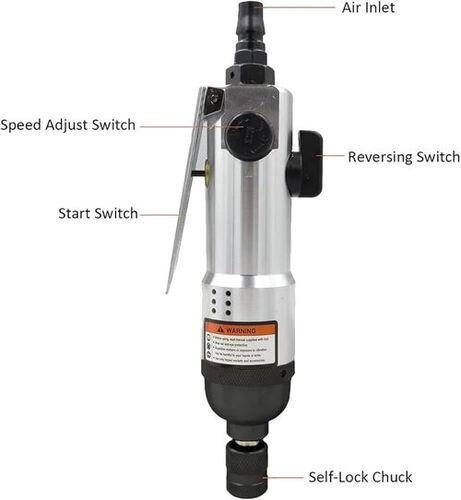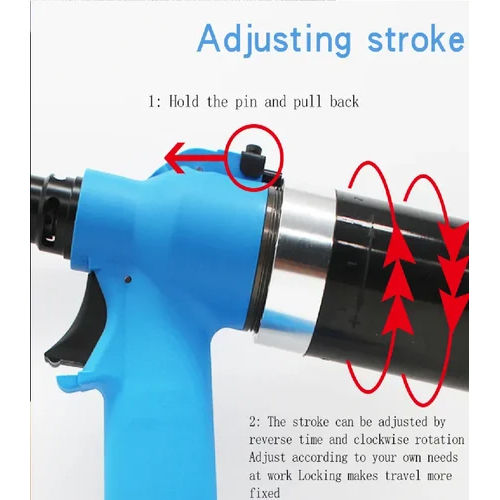
Pneumatic Air Riveter
Product Details:
- Usage Industrial
- Size Its design and purpose
- Air Consumption 2 to 4 cubic feet per minute at 90 psi
- Product Type Pneumatic Air Riveter
- Speed 20 to 30 rivets per minute m/s
- Weight 1-3 kg Kilograms (kg)
- Color Blue
- Click to View more
Pneumatic Air Riveter Price And Quantity
- 1 Piece
- 8000 INR/Piece
Pneumatic Air Riveter Product Specifications
- 20 to 30 rivets per minute m/s
- Pneumatic Air Riveter
- Its design and purpose
- 2 to 4 cubic feet per minute at 90 psi
- 1-3 kg Kilograms (kg)
- Blue
- 8 - 12 inches Inch (in)
- Industrial
- 4 - 6 inches Inch (in)
Pneumatic Air Riveter Trade Information
- Paypal, Cash Advance (CA), Cheque
- Days
- Yes
- If order is confirmed we will reimburse the sample cost
- Asia
- All India
Product Description
A pneumatic air riveter is a tool that uses compressed air to quickly and efficiently fasten rivets, which are permanent mechanical fasteners used to join two or more materials. This tool is widely used in automotive, aerospace, construction, and manufacturing industries for applications that require secure, durable joints.
Key Features and Components:
1. Air-Powered Mechanism: A pneumatic air riveter connects to an air compressor, utilizing pressurized air to apply the force needed to drive rivets. This makes the tool faster and requires less manual effort compared to traditional hand riveters.
2. Trigger Operation: Most pneumatic riveters have a trigger mechanism that allows the user to control the application of each rivet precisely, with minimal force.
3. Nosepieces: Pneumatic riveters often come with interchangeable nosepieces of various sizes to accommodate different rivet diameters and types, such as blind, pop, or solid rivets.
4. Exhaust Port: An exhaust system vents the air used to drive the rivet, often in a way that reduces noise and keeps airflow directed away from the operator.
5. Lightweight and Ergonomic Design: Designed to reduce fatigue, these tools are generally lightweight and ergonomically shaped for prolonged use.
6. Pulling Mechanism: The pulling mechanism in a pneumatic riveter grips the mandrel (stem) of the rivet and pulls it through the materials, expanding the rivet body to secure the materials together.
Advantages:
Speed: Much faster than manual or electric riveters.
Consistency: Ensures uniform pressure, making each rivet joint secure and reliable.
Reduced Fatigue: The air-powered mechanism requires less physical effort, enabling longer periods of use.
Common Applications:
Aircraft assembly
Automotive bodywork and repair
Structural joining in construction
Metalworking and industrial manufacturing

Price:
- 50
- 100
- 200
- 250
- 500
- 1000+
Other Products in 'Pneumatic Tools and screwing' category
 |
KAASU ENTERPRISES
All Rights Reserved.(Terms of Use) Developed and Managed by Infocom Network Private Limited. |





